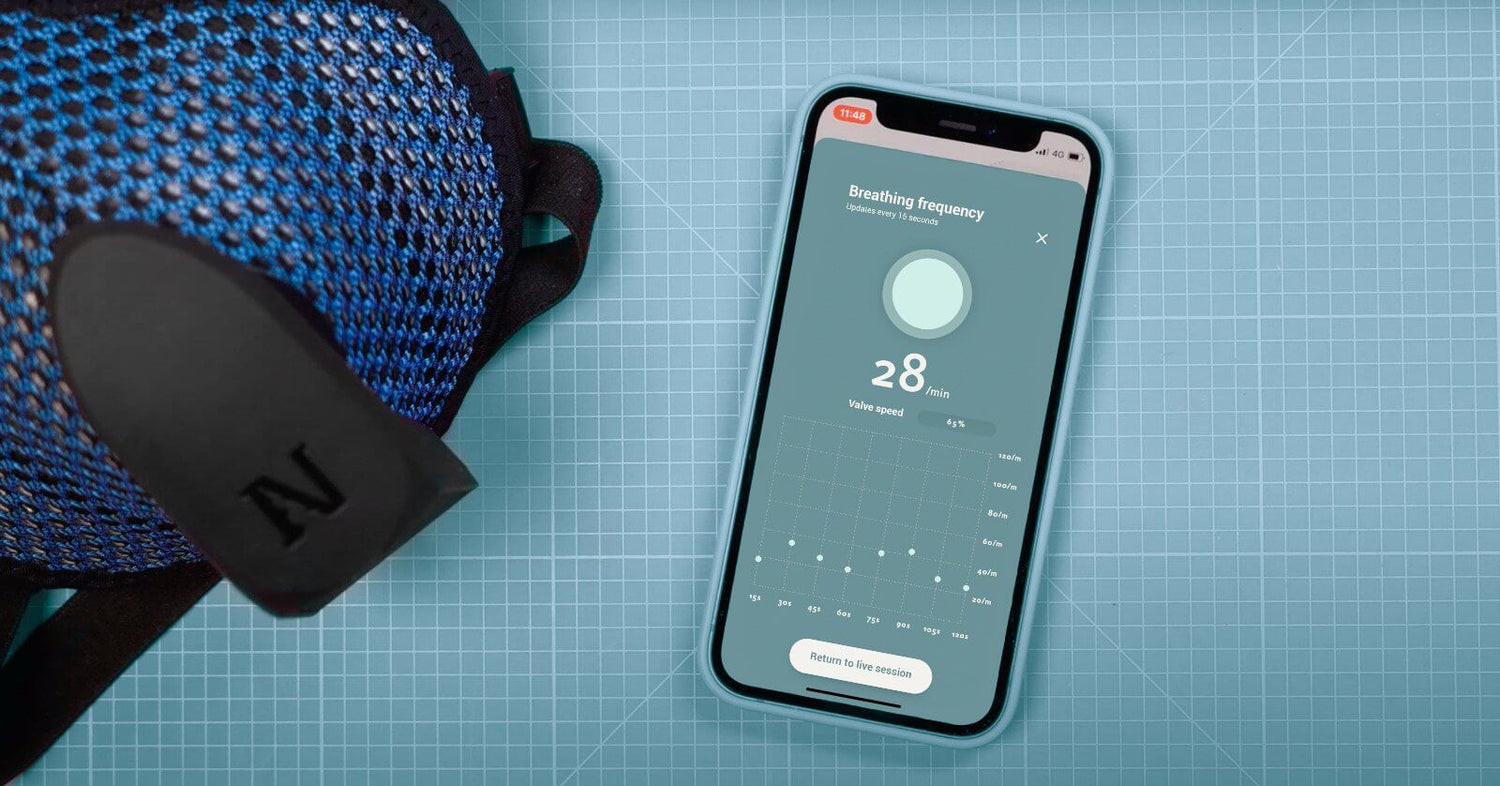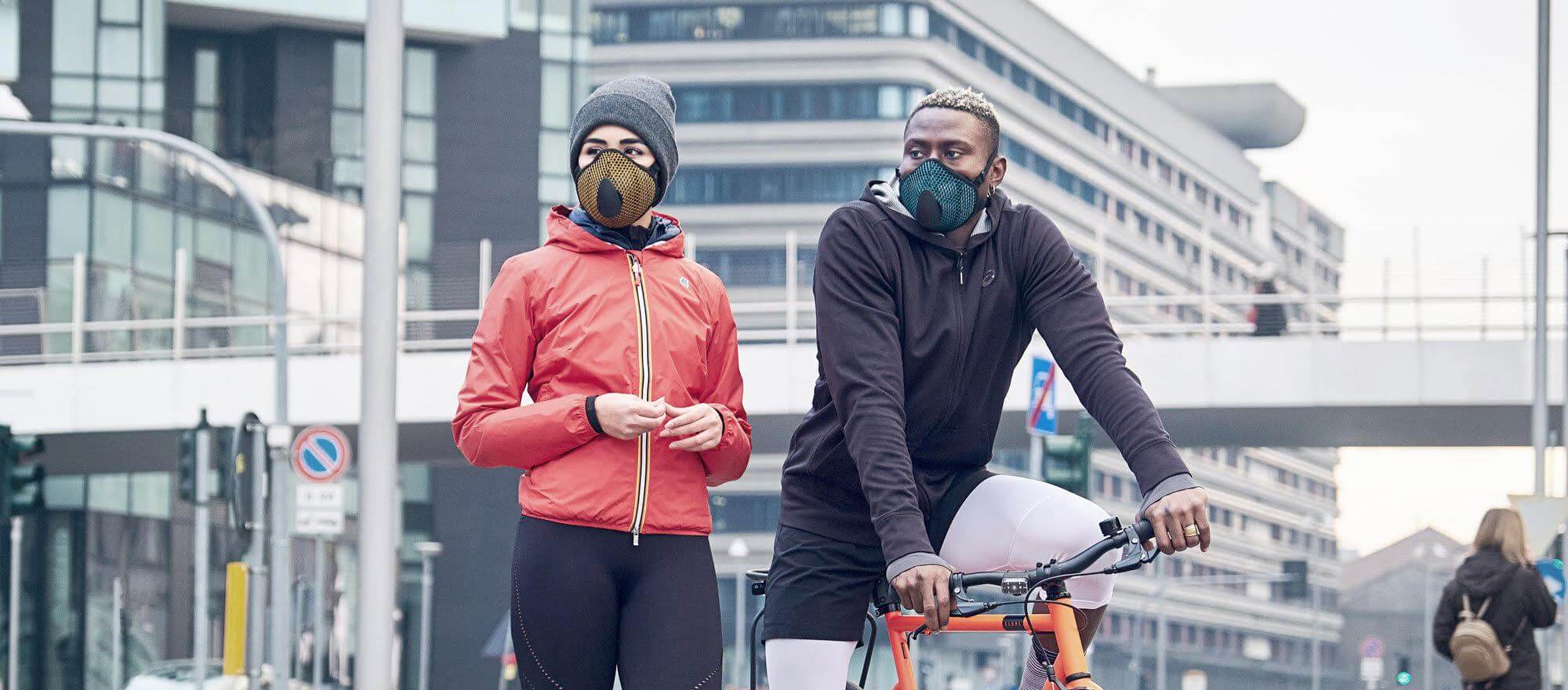In the last years, many of us have started using health monitoring devices. Dedicated wristbands or smart watches have flooded the market and provide us with detailed information on our bodily processes. However, few to none are dedicated to our breath.
Narvalo has put on the market the first smart device capable of detecting the respiratory rate, a fundamental indicator for evaluating one's well-being leading to a new awareness on the breath that can bring benefits to our body. Our IoT Active Shield device, recently launched on Kickstarter, will soon be available on pre-order on our website.
How respiratory rate changes trough the ages
Our lungs are an impressive organ, their surface reaches between 90 and 100 square meters. At rest, an average human being breathes about 6 liters per minute. This can increase up to 30 times to about 200 liters at maximum effort. The rate at which we breathe at rest is related to our age and fluctuates according to the following list.
- birth to 6 weeks: 30–40 breaths per minute
- 6 months: 25–40 breaths per minute
- 3 years: 20–30 breaths per minute
- 6 years: 18–25 breaths per minute
- 10 years: 17–23 breaths per minute
- Adults: 15–18 breaths per minute
- Elderly ≥ 65 years old: 12–28 breaths per minute
- Elderly ≥ 80 years old: 10-30 breaths per minute
How do you breathe?
The increase in volume per minute for activity does not solely depend on the breathing rate. In fact, much of it depends on the movement of the chest and the diaphragm muscle that horizontally separates the upper body with the lungs from the lower part that contains the digestive system. This muscle can be trained like any other, when it's weak you will get tired quicker and might experience stitches when you exercise.
However, many of us breathe high up in the lungs, using the muscles in our chest, neck, and throat. The top of the lungs is much narrower and therefore contains less alveoli. Oxygen intake will be less effective and increases the breathing rate. As a result, the increased stress on the upper part on a higher frequency increases the wear. You might also experience stiffness in the shoulders and neck due to the overuse of the muscles used, eventually transferring into the spine.
Choose healthy habits and train your breath
Clearly a good breathing technique prevents a lot of problems. The example of the shallow breath demonstrates how overcompensation becomes a vicious circle.
Another example is breathing through our nose. Our nose has a very important function for breathing, it preheats the air, filters the air, and manages the airflow better than our mouth. Though many of us breathe through our mouth which causes the cold and dry air filled with bacteria to tighten our airways, increasing the need to breathe through our mouth on a higher frequency.
But our bodily systems are connected in a way more complex relations, inseparable from one another. For example, the lungs regulate the intake and disposal of oxygen and many other gasses, but the heart and vascular system transport these substances and in turn get affected by what they transport. The balance of these substances has an impact on the fluidity of our blood, the width of our veins, the purification of our blood, and the intake of oxygen by our cells. Breathing through your mouth allows 42 percent more water to leave your body, making your blood more viscous.
Correct breathing is one of the most direct ways of regulating your body that you can actively influence yourself.
Stress management goes through a good respiration
This direct regulation of our breath can also help against stress. As we know, our breath increases together with our heart rate and blood pressure when experiencing stress. This process can also be reversed. Athletes use breath control to experience a mental control over their body and boost self esteem. This helps them to overcome moments of failure anxiety. Concentrating on their breathing and aiming to slow it down reduces their heart rate and calms them down.
Train your breath
As we have seen, breathing has an enormous impact on our wellbeing and physical health that we can directly influence ourselves. The muscle that functions at the base of this chain of dependencies is the diaphragm which can be trained like any other muscle. By practicing sports and paying attention to your breath you can develop the muscular strength and thereby control over your breath that you will benefit from during your daily life.

Narvalo Active Shield: your respiratory rate device
Here at Narvalo we care about the air we breathe, which is why our products lead the industry in filtration and comfort. But the new Active shield with its IoT technology brings something new to the user. Not only does it provide an abundant level of filtered air inside the mask due to its electronic fan, but the connectivity with the dedicated application also provides insights into the users breathing performance.
The Narvalo Active Shield allows you to monitor your breathing performance. Not only will you provide your body with filtered clean air, but you will also know how much you breathe and how you improve. Optimize the use of your lungs and focus on your breath when you exercise. Take control over your breath and control your body.



Leave a comment
All comments are moderated before being published.
This site is protected by hCaptcha and the hCaptcha Privacy Policy and Terms of Service apply.